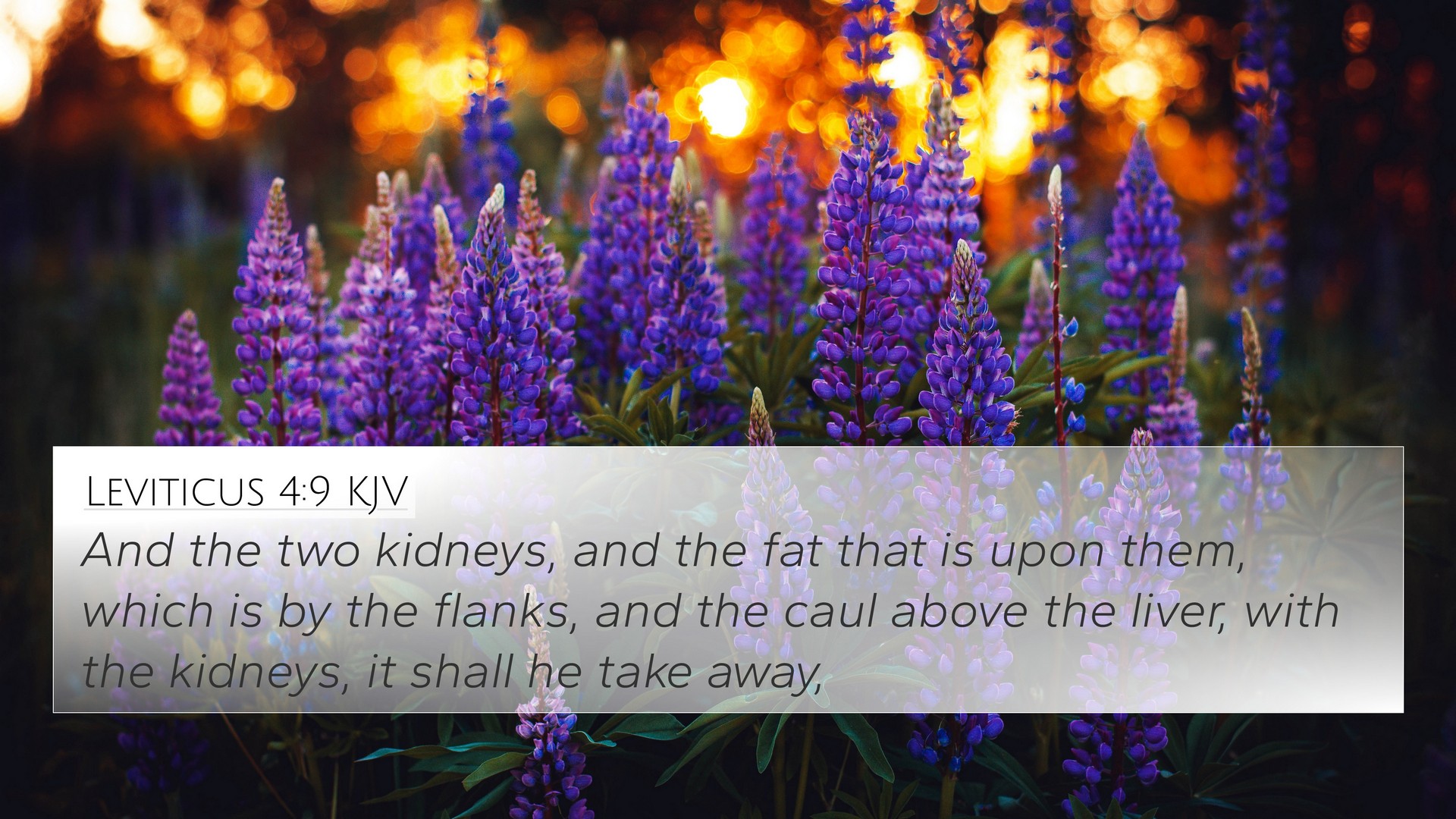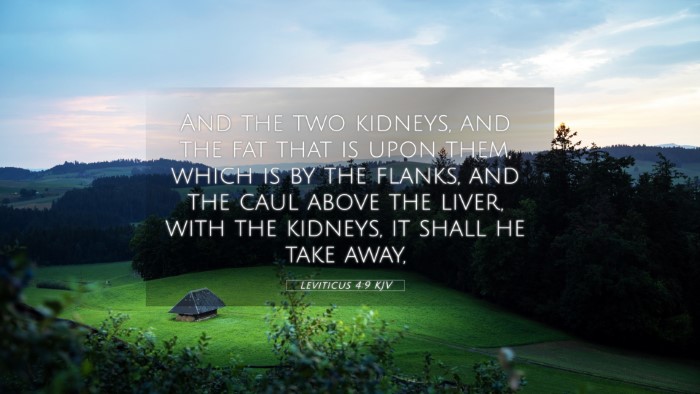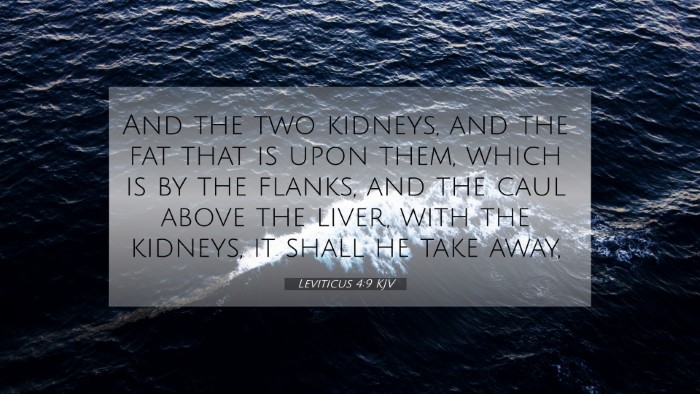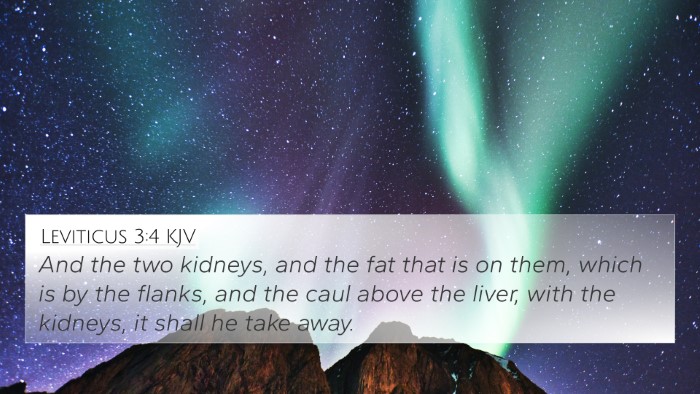Understanding Leviticus 4:9
Leviticus 4:9 states, "And the two kidneys, and the fat that is upon them, which is by the flanks, and the caul above the liver, with the kidneys, it shall he take away." This verse is part of God's instructions regarding the sin offering, detailing how the sacrificial animal should be prepared. Several commentaries provide insights into the themes and significances of this verse.
Summary of Biblical Commentary Insights
Matthew Henry's Commentary
Matthew Henry observes that the details given in this verse illustrate God's holiness and the seriousness of sin. He emphasizes that the specifics of how the offering should be conducted show God’s desire for purity and order in worship. The removal of certain parts reflects a deeper symbolic meaning tied to the sanctity required in approaching God.
Albert Barnes' Notes
Albert Barnes points out that the kidneys and liver are indicative of the innermost parts of the animal. This highlights the importance of offering the best and the most valuable to God. He signifies that these organs were considered the seat of emotions and desires during that time. Thus, the sin offering serves as a means for atonement, symbolizing the need for one's entire being to be pure before God.
Adam Clarke's Commentary
Adam Clarke elaborates on the technical aspects of the sin offering described in Leviticus 4:9. He notes that the kidneys and fat were regarded as the choicest parts, highlighting the sacrificial nature of the offering. Clarke connects this practice with the broader theme of sacrifice seen throughout the Bible, elucidating that it foreshadows the ultimate sacrifice of Christ.
Connections to Other Scripture
Understanding Leviticus 4:9 is enhanced by the following Bible verse cross-references, which illustrate thematic connections and provide insights into the sacrificial system and the concept of atonement throughout scripture:
- Exodus 29:13 - Similar instructions for the offerings, emphasizing the importance of the specific internal organs.
- Leviticus 3:16 - Further descriptions of the fat being a portion dedicated to the Lord during sacrifices.
- Hebrews 9:22 - "Without the shedding of blood there is no remission," relating to the significance of sacrifice and atonement.
- Romans 12:1 - Encouragement for believers to present their bodies as living sacrifices, alluding to the concepts defined in Leviticus.
- Isaiah 53:5 - Reflecting on the suffering servant, whose sacrifice brings healing and atonement.
- 1 Peter 2:24 - Connection to Christ's sacrifice and taking on sin, paralleling the themes in Leviticus 4.
- John 1:29 - John the Baptist introduces Jesus as "the Lamb of God," highlighting cross-references to sacrificial typology.
- Hebrews 10:4 - Discusses the impossibility of animal sacrifices removing sin, making way for the ultimate sacrifice of Christ.
- Leviticus 17:11 - The principle that the life of the flesh is in the blood, connecting to the value placed on sacrificial offerings.
- Matthew 5:17 - Jesus fulfilling the Law, reflecting the underlying continuity and the fulfilled purpose of the sacrificial system.
Thematic Bible Verse Connections
This verse not only lays the groundwork for the sacrificial system in Old Testament law but also establishes vital themes in relation to holiness, atonement, and the need for inner purity. The connections between Bible verses like Leviticus 4:9 and the New Testament references illuminate how the concepts of sacrifice and redemption are woven throughout scripture.
Conclusion
In conclusion, Leviticus 4:9 plays a crucial role in understanding the sacrificial system and God’s intentions behind it. Through comparative analysis and connecting related Bible verses, one can see how the themes relate across both the Old and New Testaments, revealing the continuity of God's redemptive plan through Jesus Christ.



